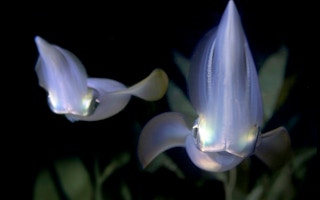The Australian Conservation Foundation and the University of Technology, Sydney today released a sustainability assessment of six Victorian seafood products.
“Overfishing, bycatch and habitat damage mean commercial fishing can be bad news for oceans, but there is also good news about efforts the seafood industry is making to become sustainable,” ACF healthy oceans campaigner Chris Smyth said.
“By choosing local and sustainable seafood products, consumers will encourage seafood producers to move towards sustainability. That will improve the health of our oceans while also supporting our coastal lifestyle and the economies of regional communities,” said David Booth from the University of Technology, Sydney.
And the winners (for fish lovers) are:
- Southern calamari from Corner Inlet, Victoria – The southern calamari, Sepioteuthis australis, is a short-lived—only 18 months—and fast growing species found in estuaries and nearshore coastal waters over reefs, sand and seagrass areas. The small Corner Inlet fishery harvest calamari using specially designed haul seines and techniques that have minimal impacts on stocks, bycatch and habitat.
- Southern calamari from Port Phillip Bay, Victoria– The southern calamari, Sepioteuthis australis, is a short-lived—only 18 months—and fast growing species found in estuaries and nearshore coastal waters over reefs, sand and seagrass areas. The Port Philip Bay fishery uses haul seine and squid jigs to harvest calamari, techniques that have minimal impacts on stocks, bycatch and habitat.
- King george whiting from Port Phillip Bay, Victoria – King george whiting, Sillaginodes punctata, is only found in southern Australia, living in bays and estuaries where it feeds on crustaceans, worms, molluscs and fish. The Port Phillip Bay fishery uses haul seines and mesh nets to catch whiting with minimal impacts on stocks, bycatch and habitat.
- Blue mussel from Sea Bounty Pty Ltd, Corio Bay, Victoria – lue mussels, Mytilus galioprovincialus, are intertidal filter-feeding molluscs that have been farmed around the world for centuries. Sea Bounty Pty Ltd grows blue mussels on drop lines at a number of locations in southern Port Phillip Bay. The company’s management practices, including the deliberate stocking of mussels at low densities, ensure the farms have only minor local environmental impacts.
- Rainbow trout from Goulburn River Trout Pty Ltd, Alexandra, Victoria– Rainbow trout, Oncorhynchus mykiss, is a member of the salmon family and is native to streams flowing into the Pacific Ocean in Asia and North America. Goulburn River Trout Pty Ltd grows rainbow trout in a series of land-based ponds on the banks of the Goulburn River. The company’s feed management—only small proportions of protein are sourced from wild caught marine fish—and effluent monitoring ensure there is little local environmental impact.
The six Victorian regional seafood products now join the five assessed as sustainable by the Program in 2010. These are:
- Red emperor from the Pilbara, Western Australia
- The red emperor, Lutjanus sebae, which grows up to a metre long, lives across Australia’s northern tropical waters in around coral reefs, lagoons and flats. In the Pilbara Trap Fishery they are caught using fish traps, a highly targeted fishing method and one of the least damaging, with very low habitat impact and bycatch.
- Farmed barramundi from Marine Produce Australia, Cone Bay, Western Australia
- Wild barramundi, Lates calcarifer, are found in turbid waters of the estuaries, creeks and mangrove forests of tropical Australia. The barramundi from Cone Bay are farmed in the sea along a small and isolated part of the Western Australian coast, 100 kilometres north of Derby. The farming operation has very low environmental impacts.
- Yelloweye mullet from the Coorong, South Australia
- The yelloweye mullet, Aldrichetta forsteri, grows to about 40 centimetres in length and lives around sandy areas in estuaries. The Lakes and Coorong Fishery is a well–managed small scale fishery operated by fishing families using small boats and harvesting techniques that have low levels of habitat impact and bycatch.
- Western king prawn from the Spencer Gulf, South Australia
- Spencer Gulf has the world’s largest population of the western king prawn, Penaeus latisulcatus. The Spencer Gulf Prawn Trawl Fishery uses management and harvesting techniques that ensure the prawns are caught in an ecologically sustainable way with low level of habitat impact and bycatch.

















